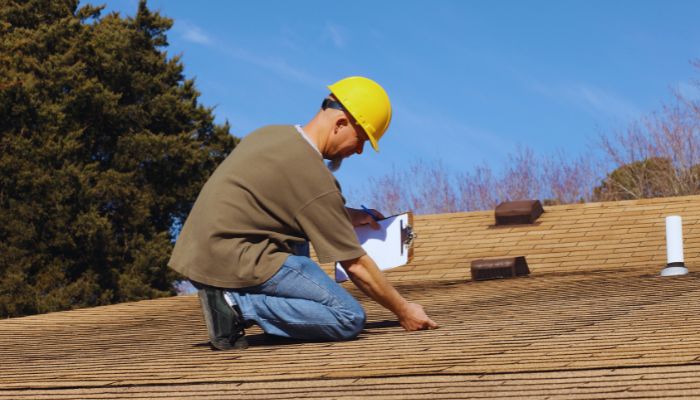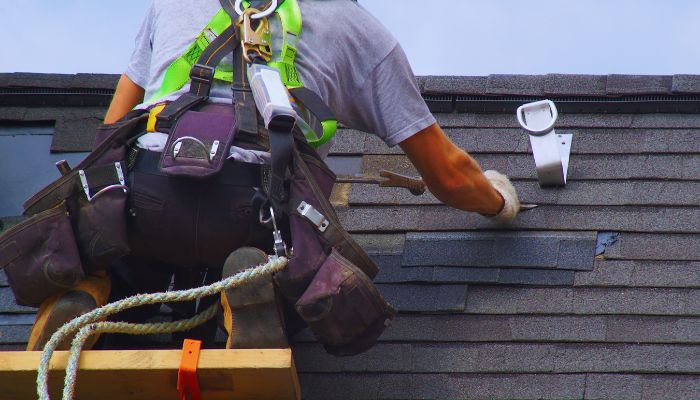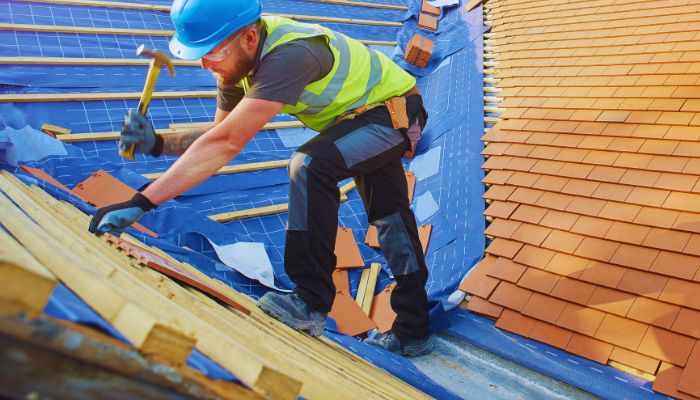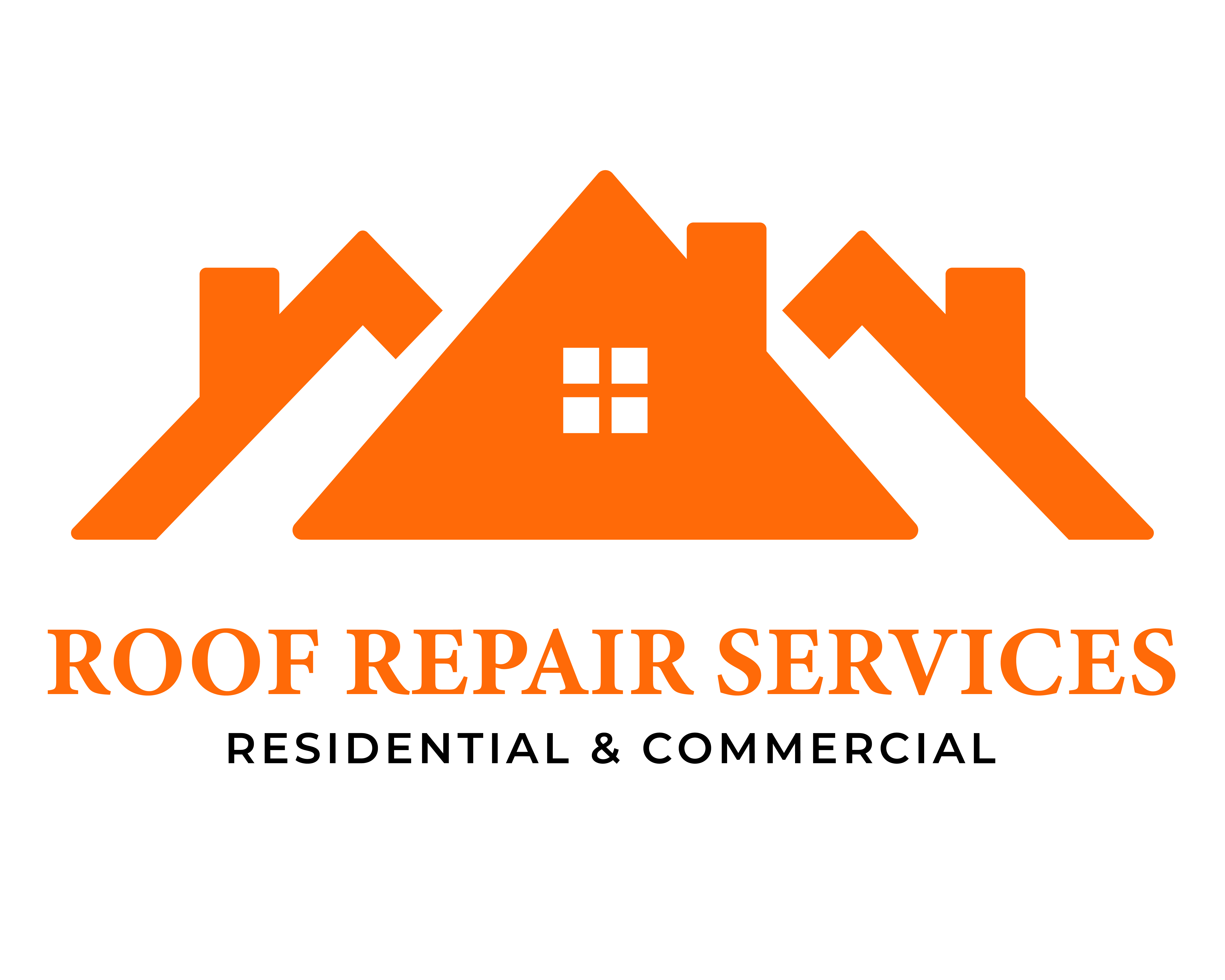Comprehensive Guide to Roof Leak Repair: Identifying and Fixing Leaks - Roof Repair Services
- Home
- Comprehensive Guide to Roof Leak Repair: Identifying and Fixing Leaks
Car Repairing

- August 1, 2024
- By: roofrepair_admin
- General
- Comments: 0
Comprehensive Guide to Roof Leak Repair: Identifying and Fixing Leaks
Roof leaks can cause extensive water damage and compromise the structural integrity of your home. Addressing leaks promptly is crucial to prevent further water damage and protect your house. This guide to roof leak repair will help you identify the source of roof leaks and provide steps for minor roof repairs.
Identifying Roof Leaks
The first step in addressing a leaky roof is to identify the source of the leak. Several signs can indicate a roof leak. Water stains on ceilings and walls are often the most apparent signs, indicating that water has seeped through the roofing materials. Mold and mildew growth in the attic or on walls can also suggest a roof leak, as these thrive in moist environments. Pools of water in the attic or on the roof surface are clear indicators of water intrusion. Checking for rotted wood in the attic or roof deck is essential, as long-term leaks often lead to wood decay. Additionally, inspecting for missing or damaged shingles, which are common causes of roof leaks, can help pinpoint the issue.
Common areas for roof leaks include around chimneys and vents, where flashing can crack and allow water to seep in. Roof valleys, where two roof slopes meet, are particularly vulnerable to leaks. Step flashing, where the roof meets a wall, can deteriorate and cause leaks. Clogged gutters can cause water to back up and leak into the roof, and in cold climates, ice dams can form on the roof uphill and cause leaks.
To find roof leaks, you can use several tools and techniques. On a dry day, use a garden hose to spray water on the roof in sections and have someone inside the house check for leaks. Visual inspection of the roof for obvious signs of damage, such as missing shingles, cracked or broken shingles, and damaged flashing, is crucial. Checking nail heads for exposure or rust, which can indicate water intrusion, and inspecting the attic with a flashlight for signs of water damage, such as wet insulation or damp spots on the roof decking, are also effective methods.

Immediate Steps to Take When a Leak is Detected
Once you have identified a roof leak, it is important to take immediate action to minimize damage. To contain the water, place a bucket or container under the leak to catch dripping water and prevent further water damage. Protect belongings by moving furniture and personal items away from the leak source to avoid damage. Applying a temporary patch using roofing tape or a piece of heavy plastic to cover the damaged area temporarily can also help.
To safely contain and manage the water, remove excess water using a mop or towels to soak up any pooled water. Ventilate the area by opening windows and using fans to dry out the area and prevent mold growth. Monitor the area for further leaks to ensure no additional water leaks occur.
DIY Roof Leak Repair
If the roof leak is minor, you may be able to fix it yourself with some basic tools and materials. To temporarily patch and repair the leak, first locate the leak by inspecting the roof and attic. Prepare the area by clearing debris and cleaning the damaged spot with a putty knife. Apply roofing cement to seal small holes and cracks in the shingles or flashing. If you find missing or damaged shingles, carefully lift the surrounding shingles and remove the damaged ones. Slide new shingles into place and secure them with roofing nails. Finally, seal the edges by applying a layer of roofing cement around the edges of the new shingles to prevent water intrusion.
For basic repairs, you will need materials and tools such as roofing cement, replacement shingles, roofing nails, a hammer, a putty knife, a flashlight, a ladder, and safety gear (gloves and safety glasses). DIY repairs are appropriate for small leaks, such as those caused by a few missing shingles or minor cracks, which can often be fixed by homeowners with basic skills. However, if you discover extensive water damage, structural issues, or are unable to locate the leak source, it is best to hire a professional roofing contractor. Professionals have the expertise and tools to handle more complex repairs and ensure the roof’s integrity.
Common Causes of Roof Leaks
Understanding the common causes of roof leaks can help you prevent future leaks and maintain the health of your roof. Missing or damaged shingles can be blown off by strong winds or damaged by hail, leading to leaks. Damaged flashing can crack, warp, or become loose, allowing water to seep into vulnerable areas. When gutters are clogged with leaves and debris, water can back up and leak into the roof and exterior walls. Ice dams form when melting snow refreezes at the roof’s edge, creating a barrier that prevents water from draining properly. Cracks or holes in the roof decking can lead to water intrusion and leaks. Leaks in the plumbing system, such as from frozen pipes, can cause water damage to the roof and walls. Inadequate ventilation can cause moisture to build up in the attic, leading to mold growth and structural damage.
Protecting Your Roof from Future Leaks
Taking preventative measures can help you avoid future leaks and extend the lifespan of your roof. Conduct regular inspections to check for signs of damage, such as missing shingles, damaged flashing, and clogged gutters. Keep gutters clean and free of debris to ensure proper water drainage and prevent leaks. Trim overhanging branches to avoid damaging shingles and prevent debris buildup. Installing gutter guards can help keep debris out of your gutters and reduce the risk of clogs. Ensure proper ventilation in your attic to prevent moisture buildup and structural damage. Address minor issues promptly by fixing small leaks and damaged areas as soon as you notice them to prevent extensive water damage.
By following these steps and maintaining a proactive approach to roof maintenance, you can protect your home from water damage, extend the lifespan of your roof, and avoid costly repairs.

Professional Roof Leak Repair Services
When dealing with a leaky roof, sometimes DIY solutions are not enough, especially if the damage is extensive or the source of the leak is difficult to identify. Professional roof leak repair services offer several advantages, including the expertise and tools necessary to address complex issues and ensure long-term solutions.
Hiring professional roofers can be beneficial in several ways. Professionals can conduct a thorough inspection to accurately locate the leak source, which may not always be apparent. They can also assess the extent of the damage and recommend the most effective repair methods. For example, if the leak is due to damaged flashing around chimneys or vents, a professional roofer can replace the flashing and seal it properly to prevent future leaks. Similarly, if the problem is with the roofing nails or shingles, they can replace the damaged materials and ensure a secure installation.
The cost of professional roof leak repairs can vary depending on the severity of the damage and the materials needed for the repair. However, investing in professional services can save you money in the long run by preventing further damage and costly repairs down the line. Additionally, professional repairs often come with warranties, providing peace of mind that the work is guaranteed.
Preventative Measures to Avoid Future Leaks
To protect your roof from future leaks, it is essential to implement regular maintenance and preventative measures. Regular roof maintenance is crucial for ensuring your roof remains in good condition and preventing minor issues from becoming major problems.
One of the key preventative measures is to inspect your roof regularly. Look for signs of damage such as missing or damaged shingles, cracked or broken shingles, and damaged flashing. Ensure that the gutters are clean and free of debris, as clogged gutters can cause water to back up and leak into the roof and exterior walls. Trimming overhanging branches is also important to avoid damaging shingles and prevent debris buildup on the roof surface.
Installing gutter guards can help keep debris out of your gutters and reduce the risk of clogs. Proper ventilation is another critical factor in preventing roof leaks. Ensure that your attic has adequate ventilation to prevent moisture buildup, which can lead to mold growth and structural damage.
Address minor issues promptly to prevent extensive water damage. For example, if you notice small leaks or damaged areas, fix them as soon as possible to avoid more significant problems. Regular roof maintenance should include cleaning the roof surface to remove debris, inspecting for signs of wear and tear, and ensuring that all components, such as flashing and seals, are in good condition.
Common Roofing Materials and Their Leak Resistance
Different roofing materials offer varying levels of resistance to leaks, and understanding the durability and maintenance requirements of each can help you make informed decisions about roof repairs and replacements.
Asphalt shingles are one of the most common roofing materials due to their affordability and ease of installation. However, they can be prone to damage from high winds and hail, leading to leaks. Regular inspections and prompt repairs of damaged shingles can help maintain their leak resistance.
Metal roofs are known for their durability and long lifespan. They are highly resistant to leaks and can withstand harsh weather conditions. However, metal roofs require proper installation and maintenance to prevent issues such as rust and corrosion, which can lead to leaks. Regular inspections and cleaning can help keep metal roofs in good condition.
Tile roofs, made from materials such as clay or concrete, are also highly durable and resistant to leaks. However, they can be heavy and require a strong roof structure to support their weight. Tile roofs are less prone to damage from weather conditions, but cracked or broken tiles should be replaced promptly to prevent water intrusion.

Long-term Solutions and Roof Replacement
Sometimes, continuous repairs may not be sufficient to address ongoing issues with a leaky roof, and a roof replacement may be necessary. Replacing your roof can provide long-term protection against leaks and improve the overall durability and value of your home.
When considering a roof replacement, it is essential to choose the right roofing material for your climate and home. Durable materials such as metal or tile can offer better leak resistance and longevity compared to traditional asphalt shingles. Consulting with a professional roofing contractor can help you determine the best material for your needs and budget.
The benefits of upgrading to more durable roofing materials include improved resistance to weather conditions, reduced maintenance requirements, and a longer lifespan for your roof. While the initial cost of a roof replacement can be higher than repairs, it can save you money in the long run by eliminating the need for frequent repairs and reducing the risk of extensive water damage.
Conclusion
In conclusion, investing in both essential and advanced roof maintenance services is critical for prolonging your roof’s lifespan and ensuring the safety and structural integrity of your home. Regular roof inspections, professional repairs, and preventative measures like cleaning gutters, trimming overhanging branches, and addressing moss and algae growth can prevent costly repairs and extend the life of your roofing materials. Engaging professional roofing contractors for comprehensive maintenance services provides peace of mind and guarantees that your roof remains in optimal condition.
By scheduling regular inspections and maintenance, you can address minor issues before they become major problems, maintain proper ventilation, and prevent ice dams and other forms of roof damage. Regular roof maintenance services not only enhance the longevity of your roof but also improve your home’s overall safety, efficiency, and value. Taking these steps will ensure that your roof remains strong, durable, and capable of protecting your home from the elements for years to come.
